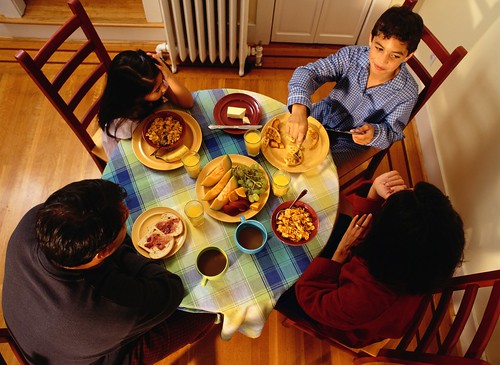
As Administrator of USDA’s Food and Nutrition Service, I’m encouraged by the strong support the new Farm Bill gives the Supplemental Nutrition Assistance Program (SNAP). Millions of American families can now be assured that they will have continued access to healthy food as they return to work and rebuild in the wake of tough times. As we move forward, though, I think it’s a good time to highlight some of the facts about this vital program that may not be widely known. For example, did you know:
FACT: SNAP benefits are an important support for people working at a job to provide for their families. In fact, 31 percent of all households have earnings from a job, and about 42 percent of all participants live in a household with earnings. Half of SNAP households that contain children have earnings. This includes 41 percent of female-headed, single-parent households, and 70 percent of married-couple households. It’s also important to note that most SNAP recipients are children, elderly, or adults with disabilities – individuals who would not be expected to work. Data show that 45 percent are children, 9 percent are age 60 or older, and 10 percent are adults with disabilities.
FACT: SNAP helps prevent food security. A recent USDA study found that participating in SNAP for 6 months is associated with a significant decrease in food insecurity. These positive effects of SNAP on food security were similar for both urban and rural households. In fact, the Census Bureau indicates that SNAP lifts 4.7 million Americans – including 2 million children – out of poverty if benefits are counted as income.
FACT: SNAP benefits can be redeemed at America’s farmers markets. At USDA, encouraging farmers markets to accept SNAP benefits has been a priority in recent years. In 2008, about 750 farmers markets and direct marketing farmers accepted SNAP. In 2013, more than 4,000 did. Research shows that about 20 cents of every SNAP dollar spent on food ends up in the pockets of American farmers and that helps nourish local economies.
FACT: SNAP responds to changing economic conditions. The program automatically expands to meet increased need when the economy is in recession and contracts when the economy is growing, making sure that food gets to people who need it the most. SNAP also provides a fiscal boost to the economy during economic downturns. Every $1 in new SNAP benefits generates up to $1.80 in economic activity by helping the store and employees where the purchase was made, the truck driver who delivered the food, the warehouses that stored it, and the farmer who produced the food.
FACT: USDA has a zero tolerance policy on fraud. The truth is USDA’s anti-fraud efforts are working and that bad actors are being caught and prosecuted. By making smart use of modern technology, USDA has reduced the trafficking rate – sale of SNAP benefits for cash -- down to 1.3 percent from 4 percent 15 years ago.
FACT: SNAP benefits cannot be exchanged for cash at places like casinos and cruise ships. SNAP cannot be used to withdraw cash at ATM machines or to purchase alcohol, cigarettes, or non-food items, regardless of the location. In fact, SNAP benefits can only be redeemed for eligible food items at authorized retailers.
The plain fact is USDA’s Supplemental Nutrition Assistance Program is a key component of our nation’s nutrition safety net that is helping millions of American families in need put food on the table, as we emerge from difficult economic times. And with passage of the new Farm Bill that safety net remains strong so that children, working families, seniors and people with disabilities will have access to nutritious food. And that’s encouraging news indeed.
